Lemon Pound Cake
This post may contain affiliate links. Read my full disclosure policy.
This lemon pound cake is the ultimate dessert for lemon lovers.
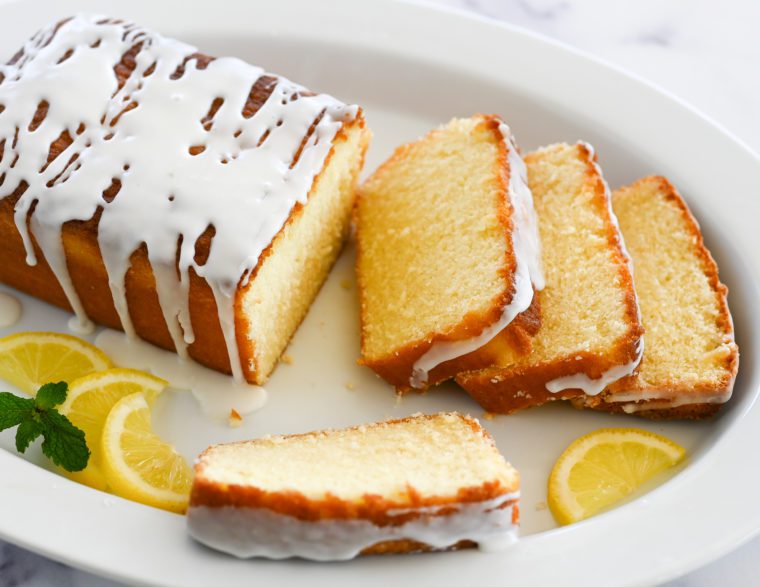
Calling all lemon lovers! This lemon pound cake is a dessert made just for you. The recipe incorporates both lemon zest and lemon juice into the cake batter, infusing the cake with a lovely lemon flavor. But the real magic happens after baking — the cake is generously doused with lemon syrup and then drizzled with a tart lemon glaze, delivering an intense burst of lemon flavor with every bite. The recipe yields two ultra-moist loaves that stay fresh for days on the countertop or can be frozen for later. If you’d like to switch things up, try my popular lemon poppyseed cake and lemon blueberry pound cake variations. A big thank you and shoutout to Karen Tannenbaum, one of my longtime readers, for inspiring this wonderful recipe!
What You’ll Need To Make Lemon Pound Cake
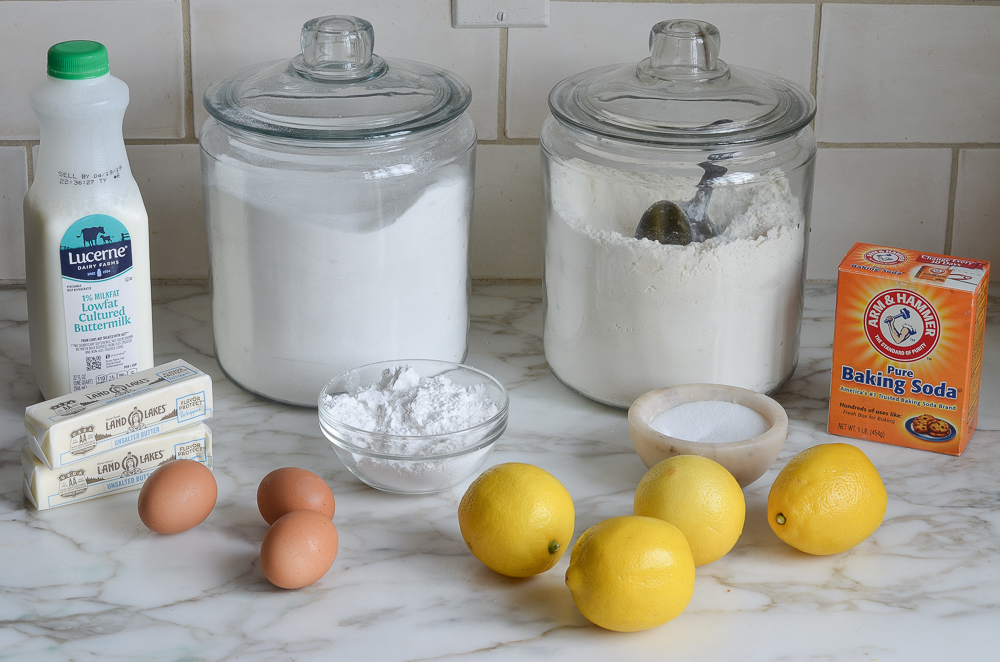
STEP-BY-STEP INSTRUCTIONS
Start by zesting and juicing your lemons. And be sure you zest the lemons first, otherwise, it will be impossible once they are juiced. The best tool for zesting is a rasp grater but any fine grater will do.
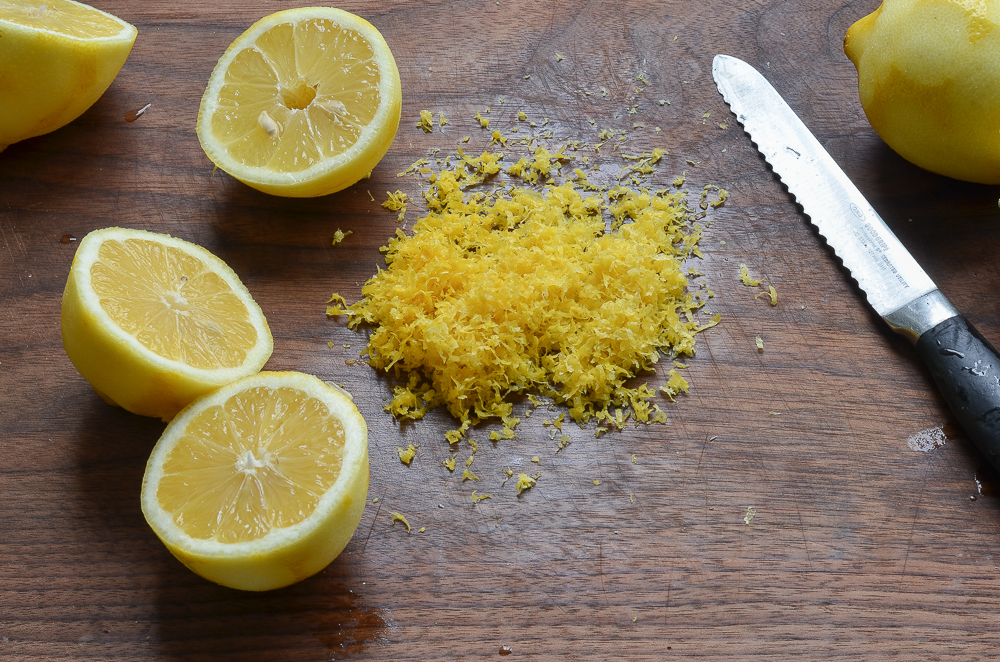 Combine the flour, salt, and baking soda in a mixing bowl. I always add dry ingredients in little piles so I don’t forget what I’ve already added.
Combine the flour, salt, and baking soda in a mixing bowl. I always add dry ingredients in little piles so I don’t forget what I’ve already added.
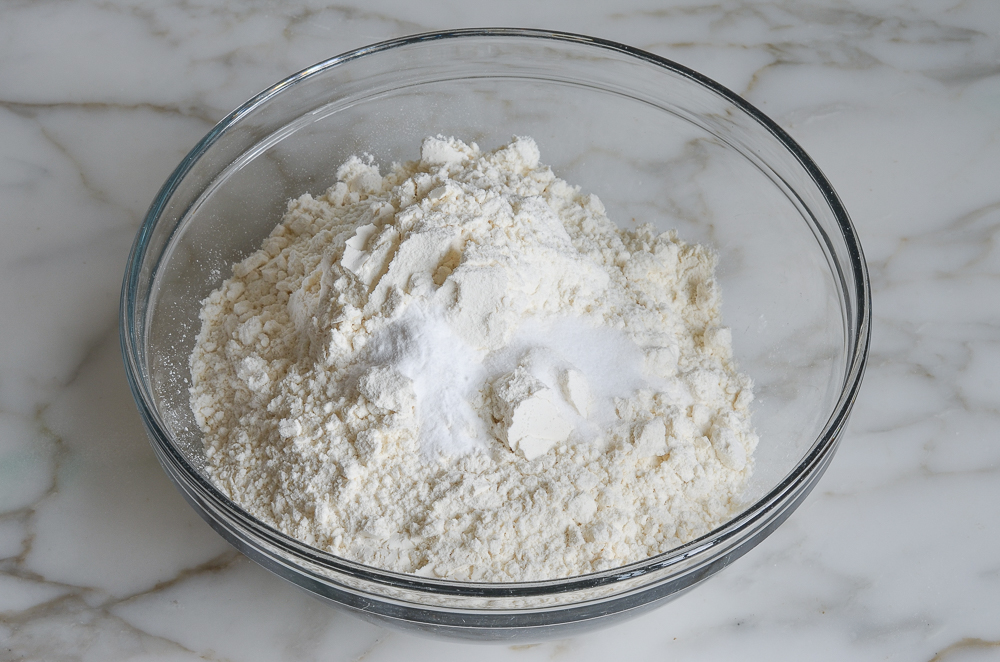 Whisk and set aside.
Whisk and set aside.
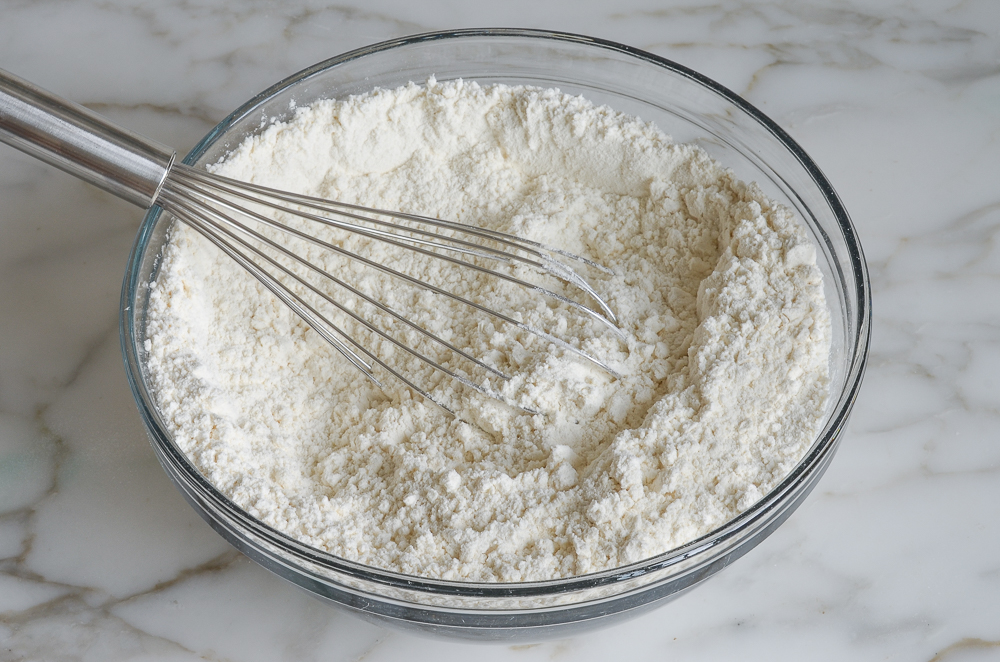
In another bowl, whisk together the buttermilk, lemon zest, and lemon juice. Set aside.
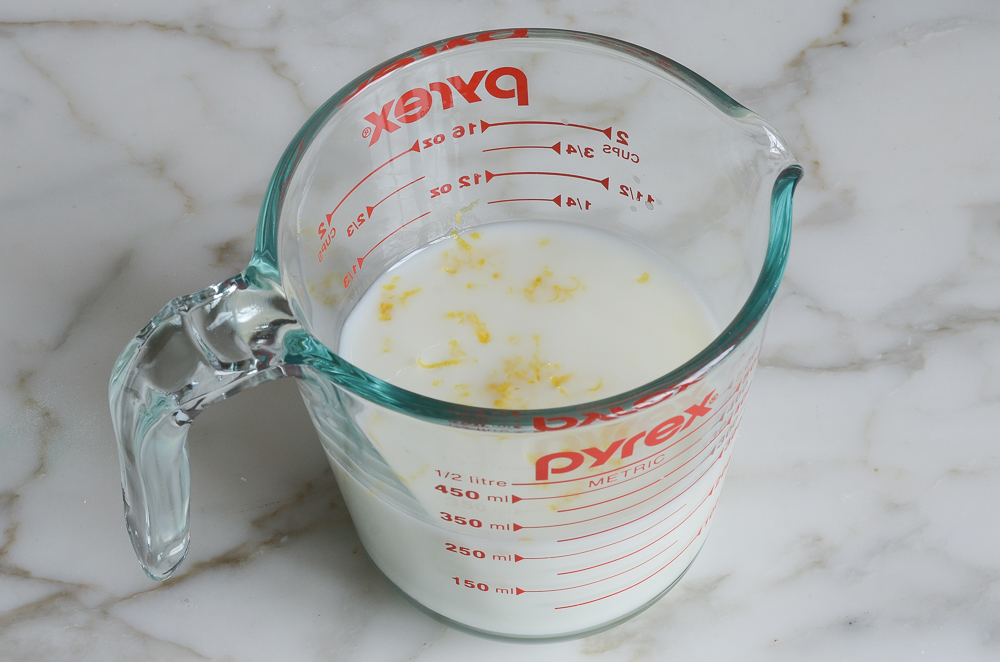
In the bowl of an electric mixer fitted with the paddle attachment (or beaters), cream the butter and sugar on medium speed until light and fluffy, 3 to 4 minutes.
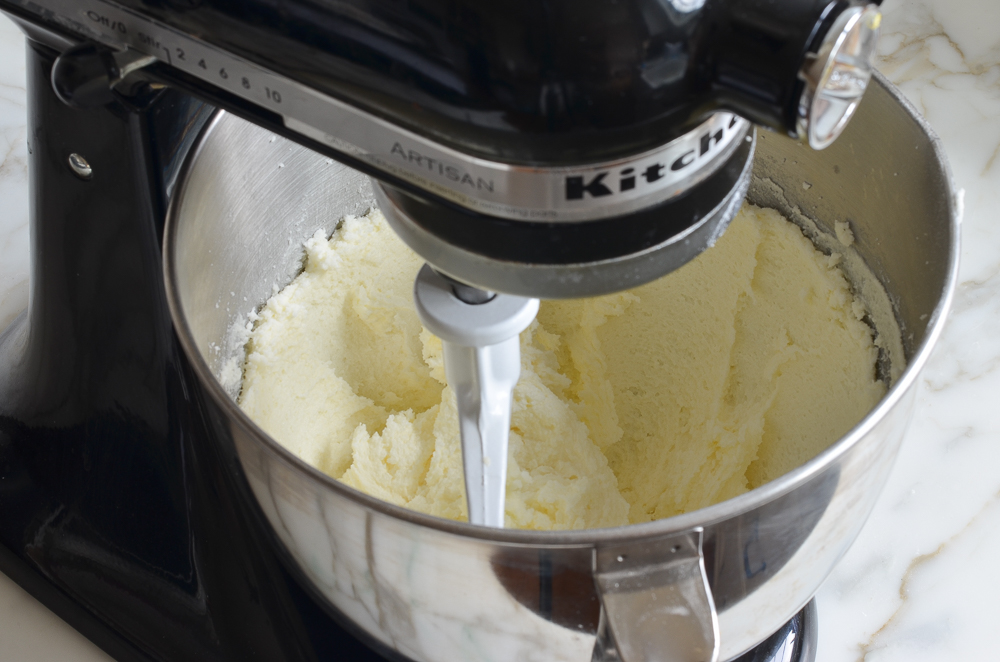
Scrape down the sides of the bowl, then beat in the eggs one at a time, beating well after each addition. Scrape down the sides of the bowl again.
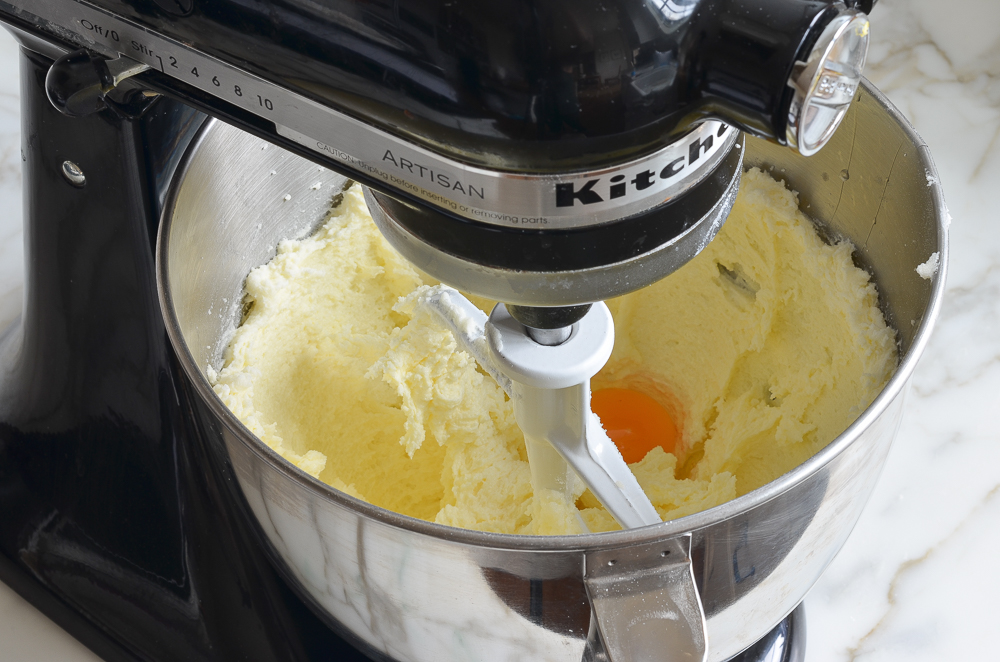
With the mixer on low speed, beat in one-quarter of the flour mixture, then one-third of the buttermilk mixture. Beat in another quarter of the flour, then another third of the buttermilk mixture. Repeat with another quarter of the flour and the remaining buttermilk mixture. Finally, beat in the remaining flour mixture.
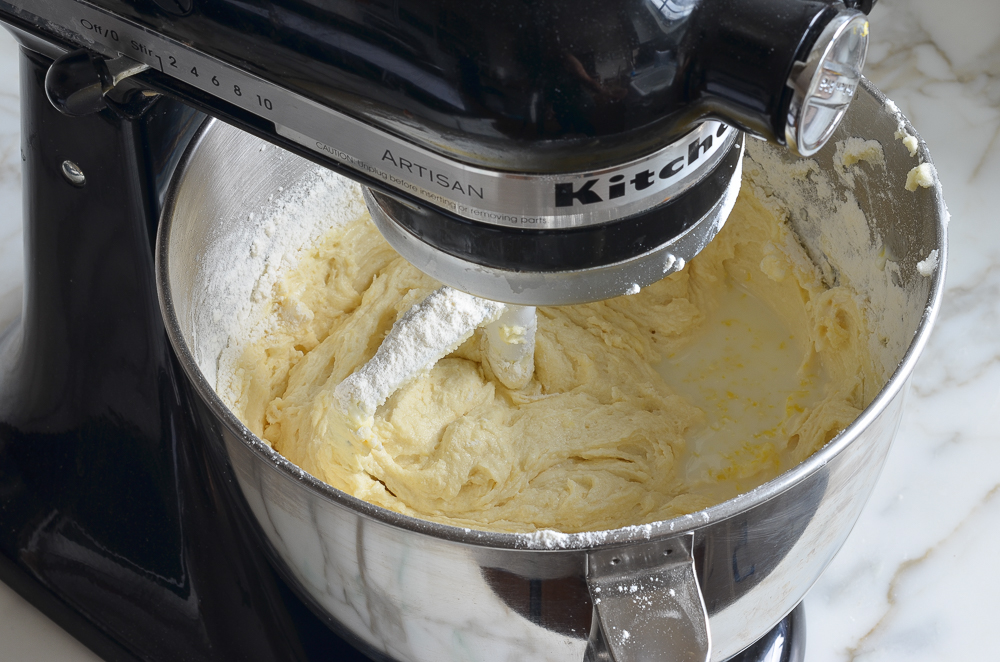
Scrape down the sides of the bowl, and give a quick mix to make sure all of the ingredients are well-incorporated.
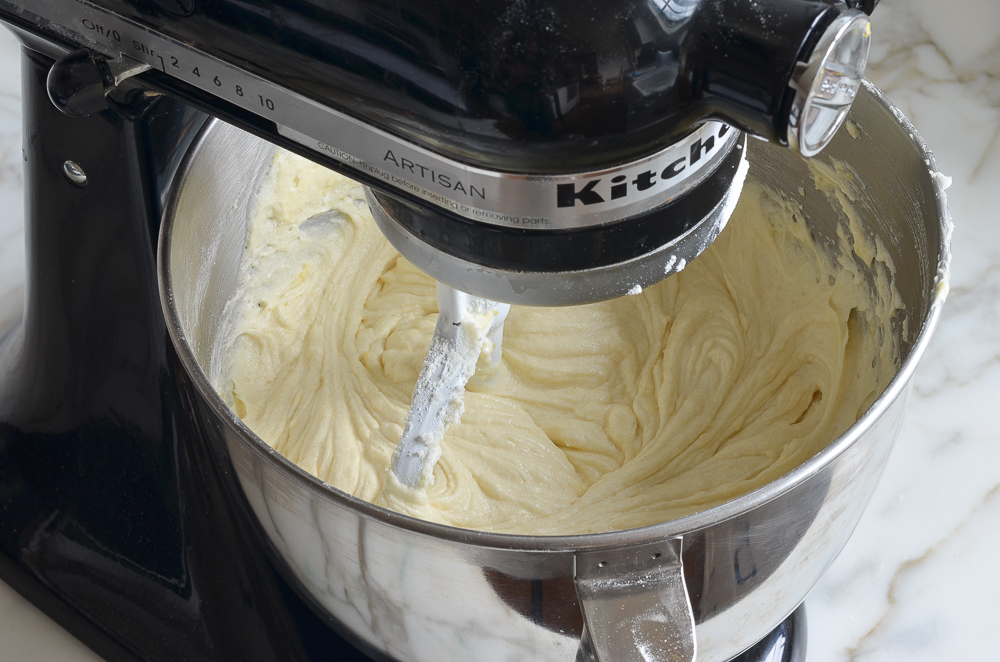
Transfer the cake batter to the prepared pans and smooth with a rubber spatula.
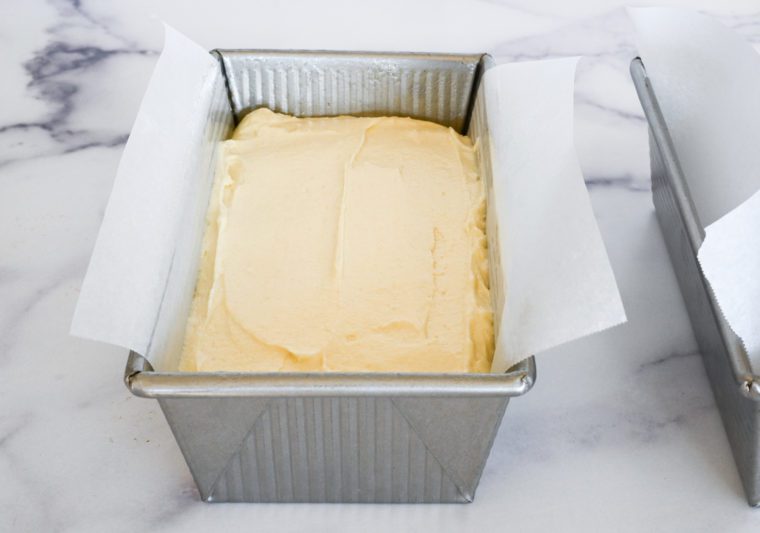
Bake for 55 to 65 minutes, or until the top is golden and a tester comes out clean.
Set the cakes on a cooling rack, and cool in the pans for 10 minutes.
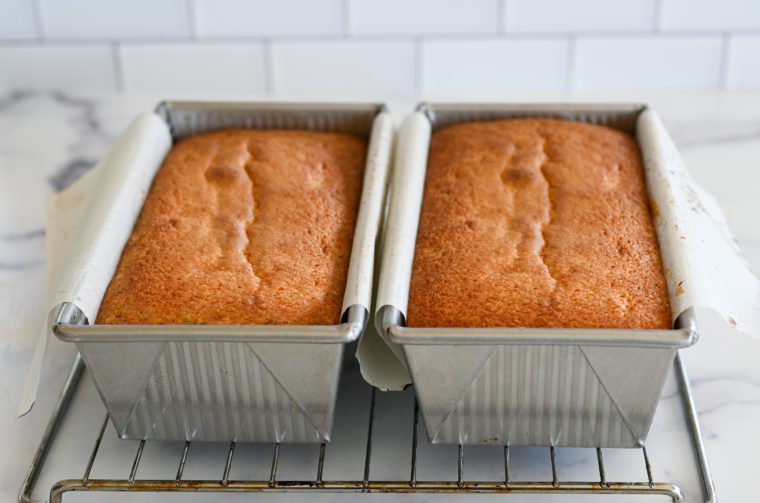
Carefully run a knife along the unlined sides of the pans to loosen the cake from the pan. Using the parchment slings, lift the cakes out of the pans and place onto the rack, leaving the parchment paper in place under the cakes. Let cool for about 1 hour.
When the cakes are almost cool, make the syrup. Combine the water and sugar in a saucepan and bring to a boil. Remove from the heat and stir in the lemon juice.
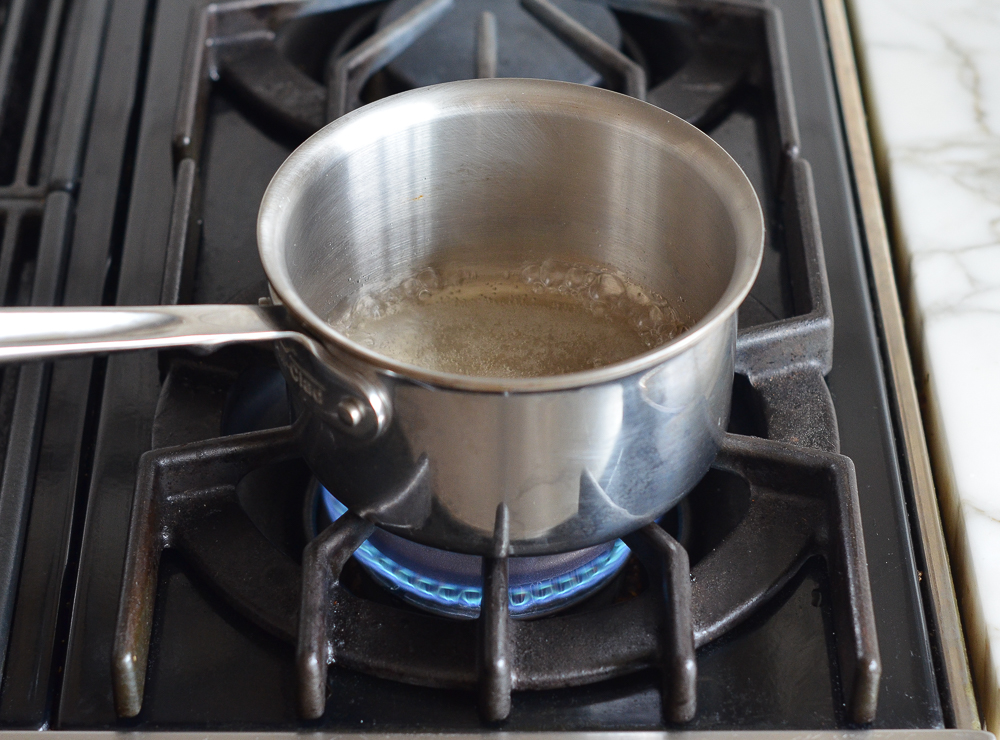
To make the glaze: in a medium bowl, whisk together the confectioners’ sugar and lemon juice. Add more confectioners’ sugar or lemon juice as necessary to make a thick but pourable glaze (it should be a little thicker than you’d think, about the consistency of molasses or honey).
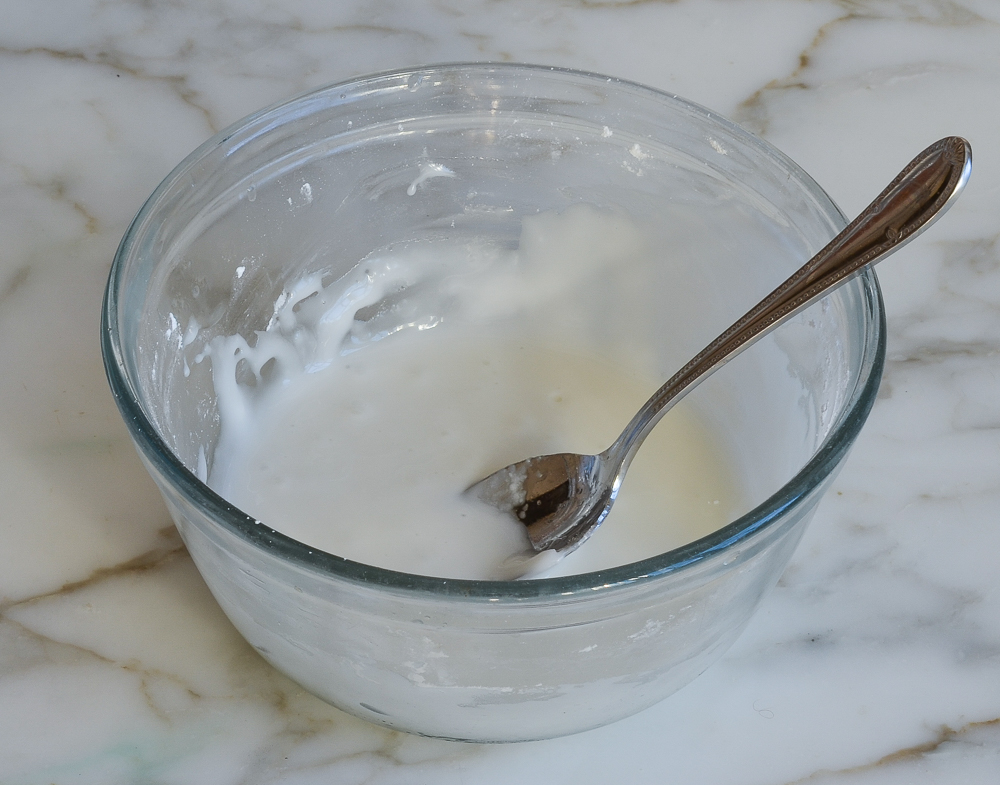
When the cakes are cool, carefully transfer them to serving platters. Gradually brush the warm syrup all over the cakes, including the sides, letting it soak in as you go.
Finally, spoon the glaze over the top of the cake, letting it drip down the sides.
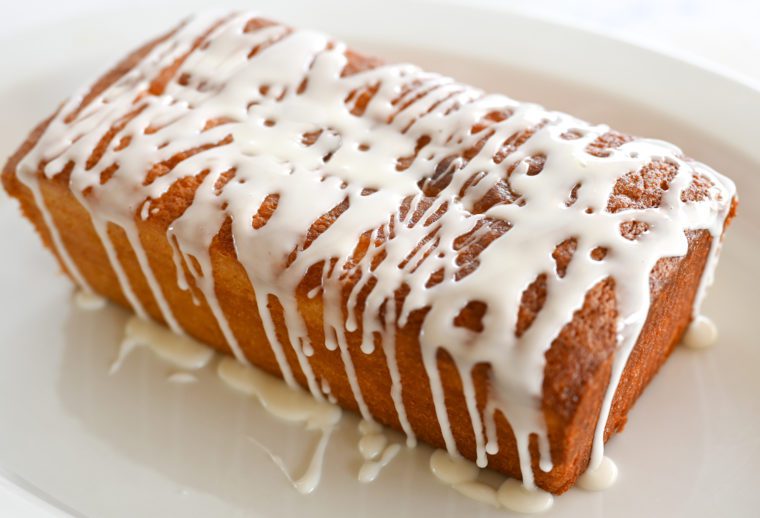
Let the cakes sit for about one hour to allow the glaze to set before serving.
How To Freeze Lemon Pound Cake
The cakes can be frozen without the glaze for up to 3 months. After they are completely cooled, double-wrap them securely with aluminum foil or plastic freezer wrap, or place them in a heavy-duty freezer bag. Thaw overnight on the countertop before serving. (Add the syrup before the cake is frozen and add the glaze after the cake is thawed.)
Note: This recipe was updated in 2022; to see the original version, click here.

You May Also Like
- Warm Lemon Pudding Cakes
- Lemon Poppy Seed Muffins
- Lemon Bars
- Cake Pans to Cookie Sheets: 16 Essential Baking Pans
Lemon Pound Cake
This lemon pound cake is the ultimate dessert for lemon lovers.
Ingredients
For the Cake
- 3 cups all-purpose flour, spooned into measuring cup and leveled-off with a knife
- ½ teaspoon baking soda
- ½ teaspoon salt
- 1 cup buttermilk (low-fat is fine) (see note)
- 2 tablespoons (packed) grated lemon zest (see note)
- 2 tablespoons fresh lemon juice
- 2 sticks (1 cup) unsalted butter, softened
- 2¼ cups granulated sugar
- 3 large eggs
For the Syrup
- 2 tablespoons water
- 2 tablespoons granulated sugar
- 2 teaspoons fresh lemon juice
For the Glaze
- 1 cup confectioners' sugar
- 2 tablespoons fresh lemon juice
Instructions
- Preheat the oven to 350°F and set an oven rack in the middle position. Spray two 8½ x 4½-inch loaf pans with nonstick cooking spray. Line the long sides of the pans with parchment paper “slings” and spray lightly with nonstick cooking spray again.
- In a medium bowl, whisk together the flour, baking soda and salt. Set aside.
- In another bowl, whisk together the buttermilk, lemon zest and lemon juice. Set aside.
- In the bowl of an electric mixer fitted with the paddle attachment (or beaters), cream the butter and sugar on medium speed until light and fluffy, 3 to 4 minutes. Scrape down the sides of the bowl, then beat in the eggs one at a time, beating well after each addition. Scrape down the sides of the bowl again.
- With the mixer on low speed, beat in one-quarter of the flour mixture, then one-third of the buttermilk mixture. Beat in another quarter of the flour, then another third of the buttermilk mixture. Repeat with another quarter of the flour and the remaining buttermilk mixture. Finally, beat in the remaining flour mixture. Scrape down the sides of the bowl, and give a quick mix to make sure all of the ingredients are well-incorporated.
- Divide the thick batter into the prepared pans and smooth with a rubber spatula. Bake for 55 to 65 minutes, or until the top is golden and a tester comes out clean.
- Set the cakes on a cooling rack, and cool in the pans for 10 minutes. Carefully run a knife along the unlined sides of the pans to loosen the cake from the pan. Using the parchment slings, lift the cakes out of the pans and place onto the rack, leaving the parchment paper in place under the cakes. Let cool for about 1 hour.
- When the cakes are almost cool, make the syrup. Combine the water and sugar in a saucepan and bring to a boil. Remove from the heat and stir in the lemon juice.
- When the cakes are cool, carefully transfer them to serving platters.
- Gradually brush the warm syrup all over the cakes, including the sides, letting it soak in as you go.
- To make the glaze: in a medium bowl, whisk together the confectioners' sugar and lemon juice. Add more confectioners' sugar or lemon juice as necessary to make a thick but pourable glaze (it should be a little thicker than you'd think, about the consistency of molasses or honey). Spoon the glaze over the top of the cake, letting it drip down the sides. Let the cakes sit for about one hour to allow the glaze to set before serving.
- Note: If you’d like to make your own buttermilk, check out the easy method here.
- Note: You'll need 4 to 5 large lemons for the entire recipe.
- Make-Ahead/Freezer-Friendly Instructions: The cakes can be made up to 1 day ahead of time and stored in a cake dome or airtight container at room temperature. They can also be frozen (without the final glaze) for up to 3 months. After they are completely cooled, double-wrap securely with aluminum foil or plastic freezer wrap, or place them in a heavy-duty freezer bag. Thaw overnight on the countertop before serving. (Add the syrup before the cake is frozen and add the glaze after the cake is thawed.)
Nutrition Information
Powered by ![]()
- Per serving (16 servings)
- Serving size: 1 slice
- Calories: 313
- Fat: 7g
- Saturated fat: 4g
- Carbohydrates: 59g
- Sugar: 40g
- Fiber: 1g
- Protein: 4g
- Sodium: 143mg
- Cholesterol: 51mg
This website is written and produced for informational purposes only. I am not a certified nutritionist and the nutritional data on this site has not been evaluated or approved by a nutritionist or the Food and Drug Administration. Nutritional information is offered as a courtesy and should not be construed as a guarantee. The data is calculated through an online nutritional calculator, Edamam.com. Although I do my best to provide accurate nutritional information, these figures should be considered estimates only. Varying factors such as product types or brands purchased, natural fluctuations in fresh produce, and the way ingredients are processed change the effective nutritional information in any given recipe. Furthermore, different online calculators provide different results depending on their own nutrition fact sources and algorithms. To obtain the most accurate nutritional information in a given recipe, you should calculate the nutritional information with the actual ingredients used in your recipe, using your preferred nutrition calculator.

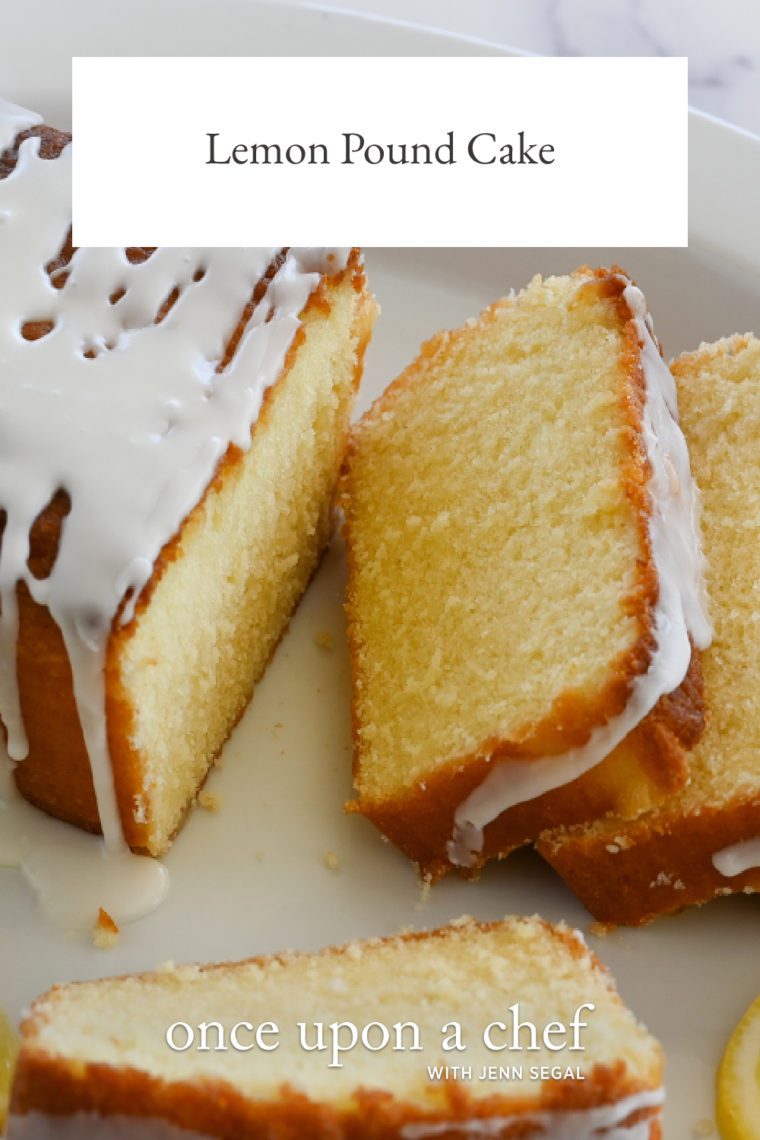
Can I use stevia instead and if so, should I reduce the amount I use?
Hi Kennedy, I don’t have any experience with sugar substitute so unfortunately, I can’t lend much guidance there — sorry!
I don’t have buttermilk. What can I do or substitute with?
Hi Liz, You can make your own buttermilk if you have milk and either lemon juice or white vinegar. See how here. Enjoy!
Hi! I am really pleased with how this turned out. I used milk and cream of tartar instead of buttermilk and it worked out great. Not as dense as traditional pound cake but delicious 😋
Hi Jenn,
I don’t have any buttermilk 🙁 Could I substitute a heavy cream?
Thanks so much!
Heavy cream won’t work here but if you have milk and lemon juice or white vinegar, you can make your own buttermilk. See how here.
One word: YUM! Made for my son’s 4th birthday and everyone loved it! Thank you!!
Hello! Wondering if I might be able to sub the buttermilk for sour cream? I know I can make a buttermilk substitute at home, but I have some sour cream I’d love to get rid of. Thank you for your time!
Sure, Mary — I’d just thin it out with a bit of milk. Hope you enjoy!
Can I use self rising flour?
Hi Sally, I wouldn’t recommend it — sorry!
I am a beginner baker so thanks for the detailed step by step directions. The cake turned out marvelously! The taste is unbelievable. I used your suggestion of spraying the bundt pan and sprinkling with sugar and the cake came out with no problem. I texted pictures to friends and they are bidding online for slices ; – )
I want to make this cake again but with a pineapple flavor. If I used a 1/2 cup of pineapple juice and a 1/2 cup of milk to get a full cup of liquid would the cake texture turn out the same as the lemon?
I wouldn’t recommend it – sorry!
Just wanted to say thanks for this delicious recipe and especially for the very thorough instructions. I’m new to baking, having started it as a weekly tradition with my 3 year old. I would have never known to mix dry and wet ingredients in stages, or to take the cake out from the pan after 10min, if not for your excellent instructions. I didn’t have a bundt pan so I used two loaf pans instead but the result was perfect to us! Had every bit of YUM we were hoping for!
So glad you enjoyed it! 🙂
I was so excited for this recipe as i have a tried and true poundcake that i always make but wanted to venture out with your lemon cake. Sadly, i could not get it out of the bundt pan in one nice piece. So it will become trifle. I have a great nonstick new bundt pan. The only thing i did different was use King Arthur cake flour as i do in my other recipe. Could that have affected it? I tried to take it out of the pan after 10 minutes. I am thinking it was still too warm. Any ideas? The flavor of the cake is yummy so if you can advise, i will try again.
Hi Ellen, if you have a new bundt pan and you were very thorough when treating it with non-stick cooking spray (or shortening) and sugar, I suspect it was due to the cake flour. I hope you have better luck the second time around!
Have used this recipe several times before using 2 loaf pans (one for home, one for others) and loved it! Made today using my bundt pan. Fabulous! Looked picture perfect and tasted even better. Everyone raved about it. No changes, no substitutions. SUPER RECIPE! Thanks!
How did you change the baking time based on using two loaf pans? I’d like to try this!
Hi Julianne, can make this in two 8-1/2 by 4-1/2-inch loaf pans. They should take about 45 minutes plus or minus in the oven, so keep an eye on them. Enjoy!